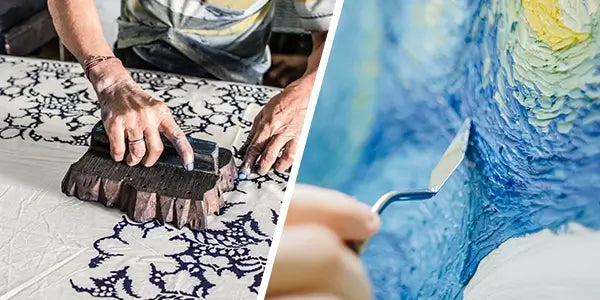Art prints hold more than just aesthetic value; they are treasured keepsakes that carry personal and monetary significance. Whether you're a seasoned collector or new to the world of art, understanding how to care for these pieces ensures they remain vibrant and valuable for years to come. This guide offers expert advice on preserving and protecting your art prints.
Understanding Art Prints
Before diving into preservation techniques, it's crucial to understand what makes art prints special. Art prints are reproductions of original artworks, created using various printing methods such as lithography, screen printing, or digital printing. They range from high-value limited editions signed by the artist to more accessible open edition prints.

Environmental Protection
Light Exposure
- Prolonged exposure to light, especially sunlight, can cause colours to fade and paper to deteriorate. To prevent this:
- Display prints away from direct sunlight.
- Use UV-protective glass when framing to filter out harmful rays.
Humidity and Temperature
- Fluctuations in humidity and temperature can warp or damage prints. To maintain optimal conditions:
- Keep the humidity level around 50% and avoid storing prints in basements or attics where conditions can vary.
- Maintain a consistent temperature, ideally between 60-75°F (15-24°C).
Proper Handling
- Always handle art prints with care to avoid creases, tears, or smudges:
- Wash and dry your hands before touching prints, or wear cotton gloves for extra protection.
- Hold prints by the edges to minimise contact with the surface.
Storage Solutions
- When storing prints, whether short-term or long-term, proper techniques can prevent damage:
- Use acid-free portfolios or storage boxes to prevent yellowing.
- Place prints in archival-quality plastic sleeves or use acid-free paper for interleaving between prints to avoid sticking or transferring ink.
- Store in a cool, dry place away from direct light sources.
Framing and Display
- Framing not only enhances the appearance of art prints but also offers protection:
- Opt for acid-free matting to prevent the print from touching the glass, which can cause moisture buildup and damage.
- Choose a frame that complements both the print and your decor, ensuring it has a sturdy backing that will support and protect the print.
- Consider professional framing for valuable or delicate prints to ensure they are handled and preserved correctly.
Regular Maintenance
- Regularly check on your displayed prints for signs of damage or deterioration:
- Dust frames and glass with a soft, dry cloth to prevent buildup.
- If you notice any damage, consult a professional conservator for advice on restoration or preservation.

Conclusion
Preserving and caring for art prints is an essential aspect of collecting that ensures the longevity and beauty of your pieces. By understanding the factors that can affect prints and implementing these protective measures, you can enjoy your collection for many years to come.
Remember, the key to preserving art prints lies not just in proper care but also in the joy and appreciation they bring to our lives. So, display your art with pride and give it the attention it deserves.




















Leave a comment
This site is protected by hCaptcha and the hCaptcha Privacy Policy and Terms of Service apply.